Interesting Facts About Europe You Never Knew
Europe's hidden gems will astound you. Did you know Iceland is mosquito-free, making summer hikes a breeze? Norway boasts Europe's longest coastline, stretching over 100,000 kilometers. In Denmark, parents must choose from 7,000 pre-approved baby names or seek government permission. Hungary's toasting custom forbids clinking glasses, rooted in 1848 Revolution history. The Czech Republic houses nearly 1,000 castles, while Croatia's Hum, with just 30 residents, claims the title of world's smallest town. Brussels Airport, selling 800 tonnes of chocolate annually, is a chocoholic's paradise. These fascinating tidbits merely scratch the surface of Europe's intriguing quirks.
This post may contain affiliate links. If you make a purchase through these links, I may earn a commission at no additional cost to you. Additionally, portions of this post may be generated using artificial intelligence (AI) technology. While we strive for accuracy, please be aware that AI-generated content may not always be perfect and should be fact-checked when necessary.
The Spatula Scoops
- Iceland is completely devoid of mosquitoes, making it a unique paradise for outdoor enthusiasts.
- Perućica Forest in Bosnia and Herzegovina is Europe's last remaining rainforest, spanning 1,500 hectares.
- Norway's coastline measures over 100,000 kilometers, the longest in Europe, featuring stunning fjords and islands.
- Denmark has a strict baby naming law with only 7,000 pre-approved names to preserve cultural heritage.
- The Czech Republic boasts nearly 1,000 castles, requiring over 2.5 years to explore one per day.
Europe's Mosquito-Free Paradise
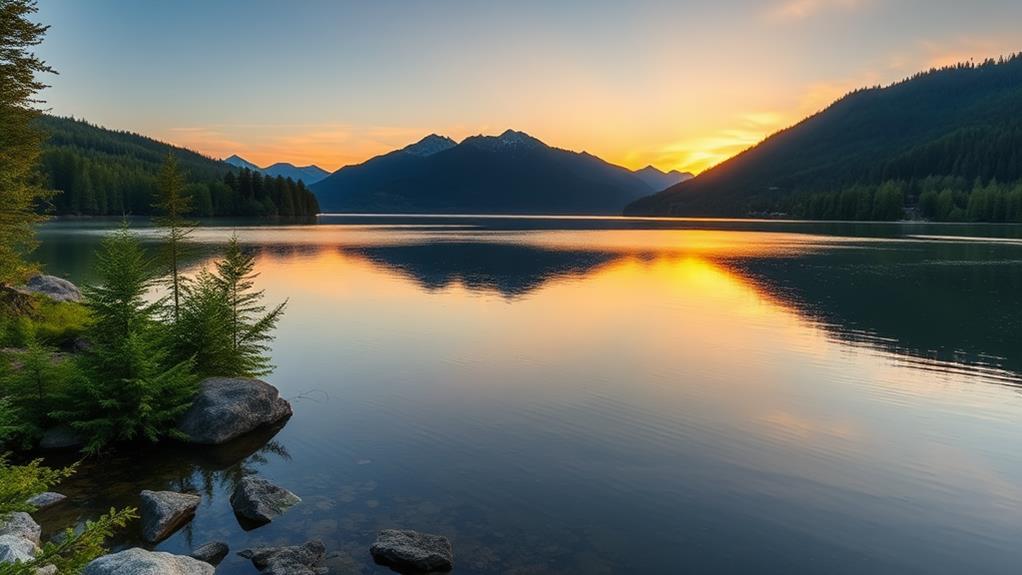
Iceland stands out as Europe's mosquito-free paradise. You might be surprised to learn that this island nation is completely devoid of these pesky insects, making it a unique destination for travelers who dread mosquito bites. The reason behind this mosquito-free environment lies in Iceland's distinctive climate and geographical features, which don't support mosquito breeding.
When you visit Iceland, especially during the summer months, you'll experience the joy of outdoor activities without the need for insect repellent. This absence of mosquitoes has greatly boosted Iceland's appeal as a summer tourist destination. You can hike, camp, and explore the stunning landscapes without the constant buzzing and itching that often accompany such adventures elsewhere.
The lack of mosquitoes in Iceland is a fascinating case of wildlife adaptation, or rather, the lack thereof. While over 3,000 mosquito species thrive worldwide, none have managed to establish themselves in Iceland's harsh conditions. This mosquito-free status is just one of many ecological peculiarities that make Iceland an intriguing subject for researchers studying environmental adaptations and biodiversity.
Royal Mail From King Charles
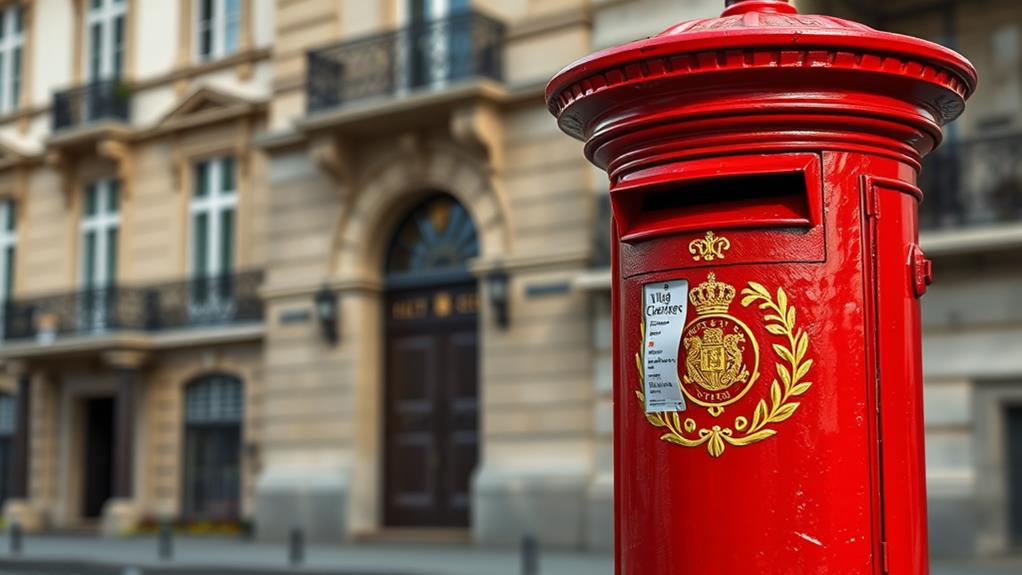
Occasionally, you might find a special surprise in your mailbox: a personalized letter from King Charles III himself. This unique royal correspondence is part of a long-standing tradition within the Commonwealth, allowing residents to receive personalized letters from the monarch for significant life events. The practice, which dates back to King George V in the early 20th century, continues to strengthen the bond between the royal family and the public.
To receive this royal mail, you'll need to follow these steps:
- Verify your eligibility (e.g., turning 100 years old or celebrating a milestone anniversary)
- Gather necessary personal information and details about the occasion
- Apply through official channels
- Await your special letter on Buckingham Palace stationery
King Charles III's personalized letters serve as cherished keepsakes for recipients, highlighting the monarchy's ongoing connection with its subjects. This gesture of royal recognition demonstrates the royal family's appreciation for important life events and milestones. By maintaining this tradition, the monarchy continues to foster a sense of community and shared celebration among Commonwealth residents, bridging the gap between royalty and the public.
Chocolate Capital of Airports
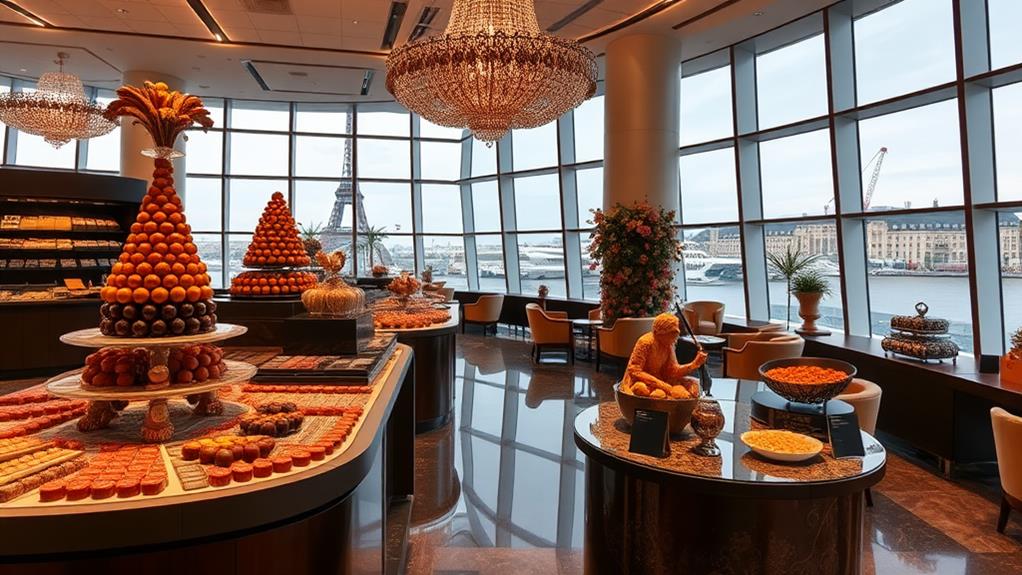
While royal mail might bring unexpected joy, there's another European treasure that's guaranteed to sweeten your travels. You'll find it at Brussels Airport, the undisputed chocolate capital of airports worldwide. Here, chocolate is bought at an astonishing rate, with over 800 tonnes sold annually. This makes it the globe's top site for chocolate sales, a confirmation of Belgium's rich chocolate-making heritage.
As you explore the airport, you'll encounter a variety of shops showcasing gourmet brands and high-quality confectionery. It's an opportunity to immerse yourself in Belgium's renowned chocolate culture without leaving the terminal. You'll find popular Belgian specialties like pralines and truffles, perfect for gifting or indulging in yourself.
This chocolate haven isn't just about satisfying your sweet tooth; it's a significant aspect of Belgium's tourism appeal. Many travelers specifically seek out these delectable treats, adding to their cultural experience of visiting the country. So, next time you're passing through Brussels Airport, don't miss the chance to partake in this unique aspect of Belgian culture. It's a delicious way to conclude your European adventure or start a new one.
Norway's Knighted Penguin Brigadier

You might think you've seen it all when it comes to military ranks, but Norway's got a surprise in store. Meet Brigadier Sir Nils Olav III, a knighted penguin who serves as the official mascot of the Norwegian King's Guard. This remarkable bird resides at the Edinburgh Zoo and has an impressive military career that showcases the friendly relations between Norway and Scotland.
Here's what makes Nils Olav III special:
- He's the third in a line of knighted penguins named Nils Olav
- He was first knighted in 2008 during a ceremonial event
- He's the first Nils Olav to achieve the rank of Brigadier
- His role highlights wildlife conservation efforts
Nils Olav III's unique position draws attention to animal welfare and conservation issues. His participation in ceremonial events serves as a reminder of the importance of protecting our planet's diverse wildlife. This unusual military appointment not only strengthens the bond between Norway and Scotland but also provides an engaging way to educate the public about penguins and their habitats. It's a demonstration of how diplomacy and wildlife conservation can intertwine in unexpected ways.
Denmark's Baby Name Restrictions

Many countries have unique cultural practices, but Denmark's approach to baby naming stands out. You might be surprised to learn that Denmark has a baby naming law that restricts parents' choices to a list of 7,000 pre-approved names. This regulation is part of the country's effort to preserve its cultural heritage and prevent potentially embarrassing or inappropriate names.
If you're a parent in Denmark and want to give your child a name that's not on the official list, you'll need to seek government permission. This process guarantees that names meet specific criteria and align with Danish traditions. However, the law does allow for some flexibility, particularly for traditional names from other cultures or languages.
This naming system has resulted in a relatively stable set of popular names in Denmark, often reflecting historical or royal significance. It's an interesting example of how a country can balance cultural preservation with individual choice. While it might seem restrictive to some, the law has helped maintain a sense of national identity through naming practices. As you explore European customs, Denmark's baby naming regulations offer a unique insight into the intersection of personal choice and cultural tradition.
Europe's Last Remaining Rainforest
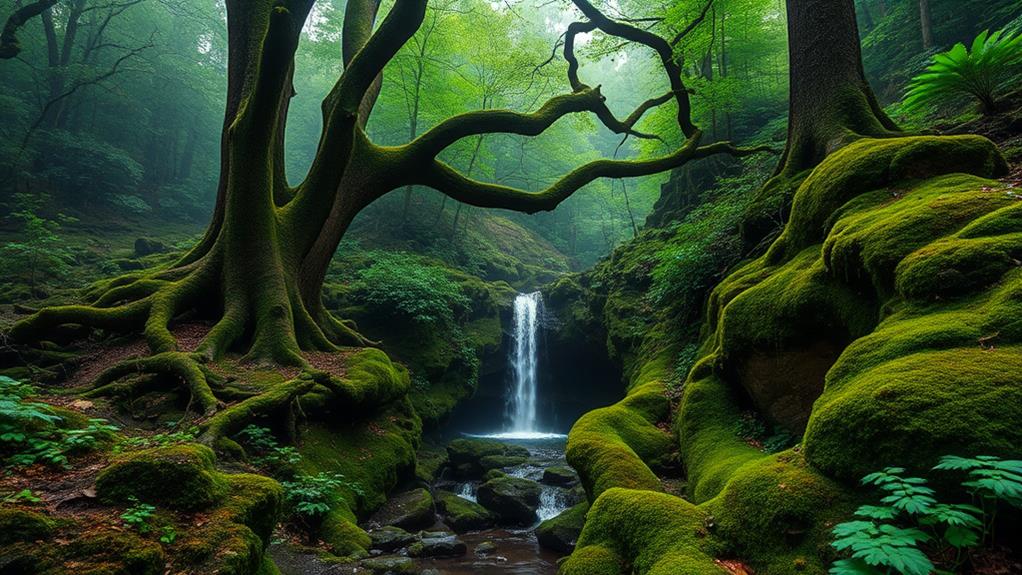
You'll be surprised to learn that Europe's last remaining rainforest is located in Bosnia and Herzegovina. This unique ecosystem, known as the Perućica Forest, covers about 1,400 hectares within Sutjeska National Park and boasts ancient tree species estimated to be over 300 years old. The rainforest's pristine environment not only supports endangered wildlife like European brown bears and Eurasian lynx but also serves as an essential site for scientific research and conservation efforts in Europe.
Location and Unique Features
Nestled in the heart of Bosnia and Herzegovina lies Europe's last remaining rainforest, the Perućica Forest. This ecological treasure, spanning over 1,500 hectares, is part of the Sutjeska National Park, a UNESCO Biosphere Reserve. You'll find trees over 300 years old in this ancient woodland, which plays a significant role in conservation efforts and supports various endangered species.
When you visit the Perućica Forest, you'll discover:
- A unique ecosystem with rich biodiversity
- Europe's highest peak, Maglić, within the same national park
- Guided tours and hiking trails for exploring the untouched beauty
- Educational programs focused on ecology and conservation
The rainforest's importance extends beyond its borders, acting as an essential water source for the surrounding environment. As you explore this natural wonder, you'll gain a deeper appreciation for its ecological significance and the need to preserve such rare ecosystems. The Perućica Forest offers a glimpse into Europe's primeval past, providing researchers and visitors alike with an unparalleled opportunity to experience a truly untouched natural environment.
Conservation and Biodiversity
While Europe's last remaining rainforest may seem small compared to its tropical counterparts, it's a biodiversity hotspot of immense ecological importance. Located in Bosnia and Herzegovina, this unique ecosystem is home to a diverse array of flora and fauna, some of which you won't find anywhere else in the world.
Conservation efforts are essential to preserving this natural treasure. The forest's ancient trees, some over three centuries old, provide significant habitats for various wildlife species. You'll find that this rainforest plays a notable role in climate regulation and carbon sequestration, making its preservation fundamental for both local and global environmental health.
| Conservation Aspect | Importance | Impact |
|---|---|---|
| Biodiversity | High | Global |
| Climate Regulation | Significant | Regional |
| Scientific Research | Valuable | Worldwide |
As you explore the facts about this unique ecosystem, you'll discover that it's not just a haven for wildlife but also a natural laboratory for scientific research. The rainforest's rich biodiversity offers invaluable insights into ecology and conservation strategies. By protecting this ecosystem, we're safeguarding an essential piece of Europe's natural heritage and contributing to global conservation efforts.
Hungary's Unique Toasting Custom
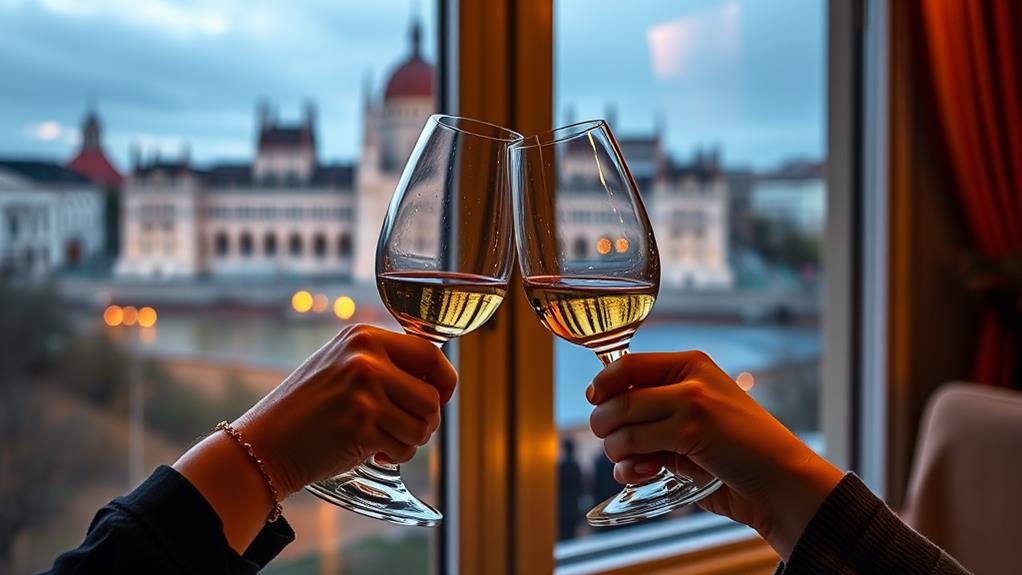
Hungary boasts a unique toasting custom that sets it apart from many other European countries. When raising a glass in Hungary, you'll notice that people don't clink their glasses together. This practice stems from the country's rich cultural history and is deeply rooted in social etiquette.
The custom originated from the 1848 Revolution and reflects Hungary's emphasis on respect and personal connection during social interactions. Instead of clinking glasses, Hungarians follow these steps:
- Raise your glass
- Make direct eye contact with each person
- Say "Egészségedre" (pronounced eh-geh-sheh-ged-reh), meaning "to your health"
- Take a sip of your drink
Czech Republic's Castle Abundance
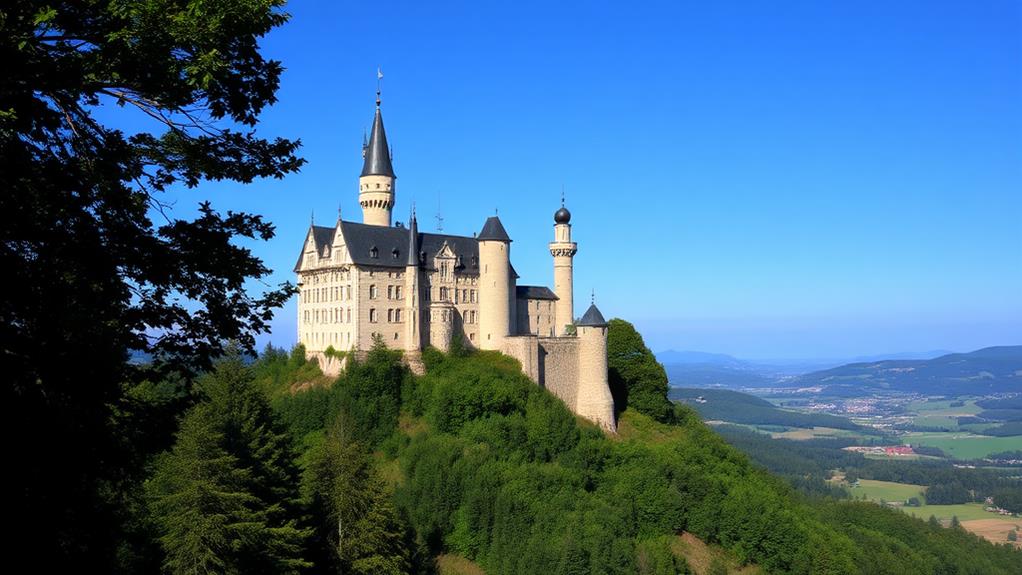
You'll be amazed by the Czech Republic's castle abundance, with nearly a thousand castles scattered across the country. This high density of castles offers you a unique opportunity to explore a wide range of architectural styles and historical periods, from medieval fortresses to Renaissance palaces. Among these, you'll find gems like Český Krumlov Castle, a UNESCO World Heritage Site, which exemplifies the rich heritage and cultural significance of these structures.
Castle Density Explained
When it comes to castle density, the Czech Republic reigns supreme in Europe. With an astonishing 932 castles scattered across the country, you'd need over 2.5 years to visit them all if you explored one each day. This high concentration of castles is a proof of the region's rich medieval history and its former status as a center of royal and noble power in Central Europe.
These castles showcase a diverse range of architectural styles, from Gothic to Renaissance, reflecting the country's evolving tastes and influences over the centuries. Many of these historic structures have gained international recognition, with some, like Česky Krumlov and Karlštejn, earning UNESCO World Heritage Site status.
To better understand the Czech Republic's castle abundance, consider these facts:
- The country has one of the highest castle-to-land-area ratios in Europe
- Many castles are open to the public for tours and events
- Castle preservation is a major focus of Czech heritage efforts
- Castle tourism greatly contributes to the country's economy
This remarkable castle density offers visitors a unique opportunity to immerse themselves in centuries of European history and architectural marvels.
Exploring Notable Castles
Among the Czech Republic's staggering 932 castles, several stand out as must-visit attractions. You'll find these medieval marvels scattered across the country, each telling a unique story of Czech history and architecture. As you explore, you'll encounter a diverse range of architectural styles, from Gothic to Renaissance and Baroque.
One of the most famous castles you shouldn't miss is Karlštejn Castle, built in the 14th century. It's a prime example of Gothic architecture and was once home to the crown jewels of the Holy Roman Empire. Another must-see is Český Krumlov Castle, a UNESCO World Heritage Site that showcases a blend of Gothic, Renaissance, and Baroque elements.
These castles aren't just tourist attractions; they're essential for historical research and preservation efforts. As you wander through their halls, you're walking in the footsteps of kings, queens, and nobles who shaped European history. With so many castles to choose from, you could spend over two and a half years exploring a different one each day. It's no wonder the Czech Republic is considered a castle-lover's paradise.
Europe's Longest Coastline
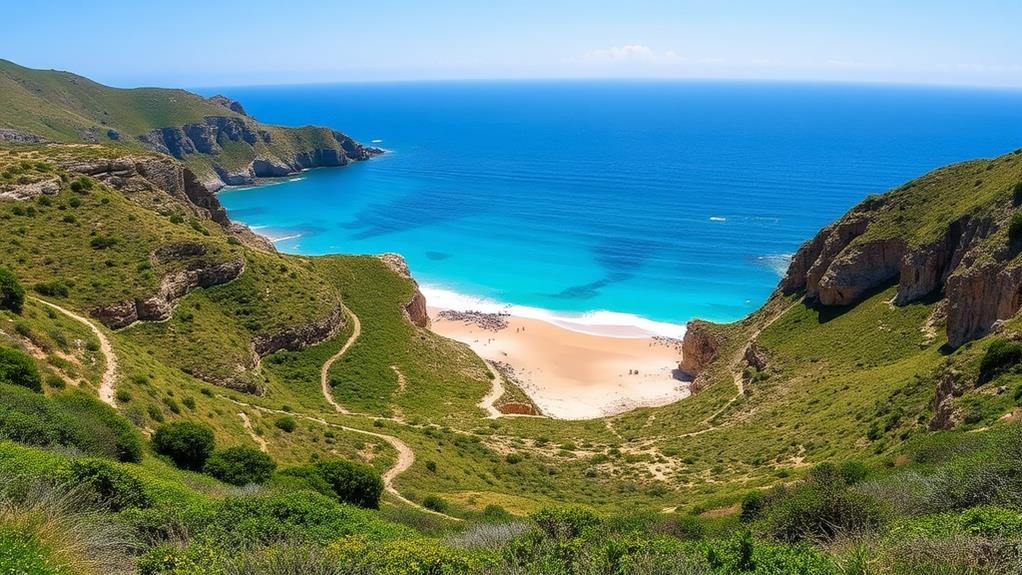
Stretching over 100,000 kilometers, Norway's coastline claims the title of Europe's longest. This impressive length is due to the country's unique geography, featuring stunning fjords and more than 1,190 islands. As you explore Norway's coast, you'll encounter diverse ecosystems and breathtaking landscapes that have made it a popular destination for adventure enthusiasts.
The extensive coastline offers numerous outdoor activities for visitors and locals alike:
- Hiking along scenic coastal trails
- Kayaking through tranquil fjords
- Fishing in rich marine waters
- Wildlife watching, including opportunities to spot whales and seabirds
Norway's longest coastline contributes considerably to its biodiversity, supporting a wide range of marine habitats. The intricate coastal geography also influences the local climate, creating microclimates that foster unique plant and animal life.
When measuring coastlines, it's important to take into account both land and sea boundaries. This qualifying definition amplifies Norway's coast length compared to other European countries. As you explore this vast coastal region, you'll gain a deeper appreciation for the natural wonders and ecological importance of Europe's longest coastline.
How Did Electricity Shape Modern Europe?
Electricity played a pivotal role in shaping modern Europe, powering industrial growth, urbanization, and communication networks. From electrified railways to factories, it revolutionized daily life and connected communities. For those curious, there are many interesting facts about electricity explained through its history, showcasing its transformative impact on Europe’s technological and economic landscape.
World's Smallest Town in Croatia
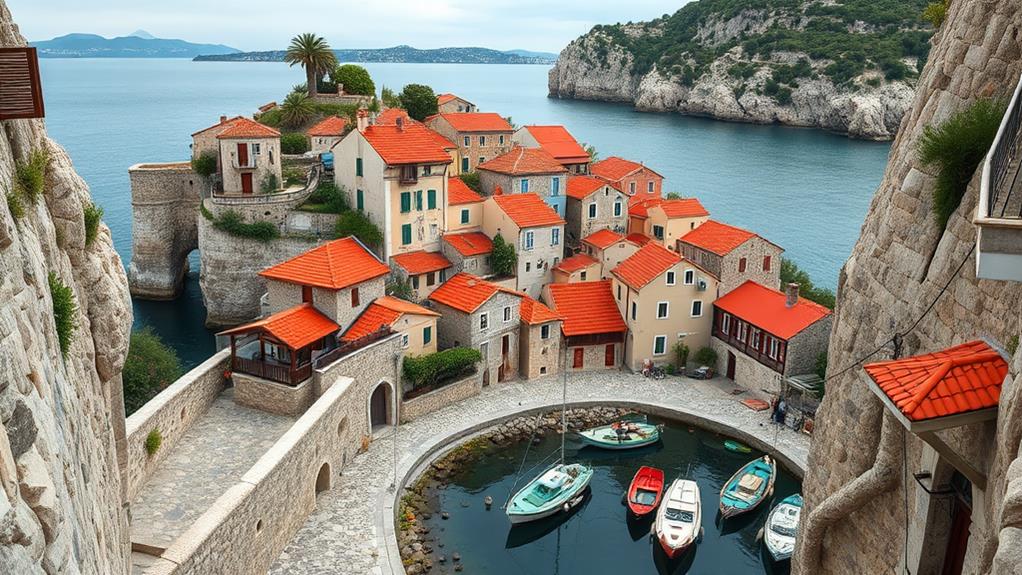
You'll find Europe's smallest town, Hum, nestled in Croatia's Istria region, with a population of just 30 residents. This tiny medieval settlement is known for its production of biska, a traditional mistletoe brandy that traces its roots back to ancient Celtic customs. Despite its size, Hum attracts visitors with its well-preserved architecture and unique cultural events, offering you a glimpse into a rich history that spans centuries.
Population of 30
Nestled in the heart of Croatia's Istrian region, Hum holds the distinction of being the world's smallest town. With a population of just 30 residents, this tiny settlement covers a mere 100 square meters. Despite its small size, Hum boasts a rich cultural heritage and historical significance dating back to the 11th century.
When you visit Hum, you'll be transported back in time as you explore its medieval structures. Here's what you can expect to find:
- Ancient city walls that have stood the test of time
- A charming church showcasing the town's religious history
- Well-preserved buildings reflecting centuries-old architectural styles
- Local shops offering traditional products, including biska (mistletoe brandy)
As you wander through Hum's narrow streets, you'll be struck by the town's unique atmosphere. It's a living representation of Croatia's past, where traditions have been carefully preserved. The town's small population contributes to its tight-knit community feel, making it an ideal destination for those seeking an authentic glimpse into European small-town life. Hum's ability to maintain its cultural identity while attracting visitors is a representation of its enduring appeal and historical importance.
Mistletoe Brandy Tradition
Hum's brandy-making tradition is as potent as its tiny size is charming. This Croatian town, with only 30 residents, is renowned for its production of biska, a unique mistletoe brandy. The brandy's roots trace back to ancient Celtic customs, showcasing the town's rich cultural heritage.
You'll find that mistletoe holds significant symbolism in Croatian traditions, often associated with love and health. This connection is reflected in the local production of biska, which has become a cornerstone of Hum's identity. The town's commitment to preserving this tradition is evident in the various events and festivals centered around biska production and tasting.
| Aspect | Description | Significance |
|---|---|---|
| Ingredient | Mistletoe | Cultural symbol |
| Origin | Celtic customs | Historical roots |
| Production | Traditional methods | Preserving heritage |
| Events | Biska festivals | Community engagement |
When you visit Hum, you'll have the opportunity to experience this unique brandy-making tradition firsthand. The town's intimate atmosphere allows for an up-close look at the production process, from harvesting mistletoe to distilling the brandy. This experience offers a genuine taste of Croatian culture, making Hum a must-visit destination for those seeking authentic European traditions.
Ancient Celtic Roots
Ancient history breathes life into the world's smallest town. Hum, Croatia, with just 30 residents, is a living proof of ancient Celtic roots and medieval architecture. This charming destination, often called a fairy-tale town, offers visitors a unique glimpse into Europe's rich past.
As you explore Hum, you'll discover its deep connections to ancient Celtic traditions, which are still evident in the town's customs and daily life. Here are four fascinating aspects of Hum's Celtic heritage:
- Biska production: The town's famous mistletoe brandy, tied to ancient Celtic rituals
- Preserved medieval structures: Including the 12th-century Church of St. Jerome
- Traditional customs: Maintained through generations, reflecting Celtic influences
- Picturesque setting: Nestled in the Istrian region, evoking a sense of timelessness
Hum's ability to maintain its ancient Celtic roots while attracting tourists is a proof of its unique charm. As you wander through the smallest town in the world, you'll be transported back in time, experiencing a slice of European history that's been carefully preserved for centuries. The town's enduring appeal lies in its seamless blend of traditional customs and medieval architecture, offering a truly immersive cultural experience.
Frequently Asked Questions
What Is Europe's Interesting Fact?
You'll be fascinated by Europe's diverse array of interesting facts. Did you know that Europe houses over 400 UNESCO World Heritage Sites, showcasing its rich cultural and natural heritage? You'll find the world's oldest zoo in Vienna, established in 1752. Monaco boasts the highest life expectancy globally at 89.4 years. Wales claims the longest place name in Europe, and Belgium is renowned as the global chocolate capital. These facts highlight Europe's unique blend of history, culture, and achievements.
What Are 25 Facts About Europe for Students?
You'll find Europe fascinating with these 25 facts. Did you know Europe has over 400 UNESCO World Heritage Sites? Russia's the most populous country, while Monaco's the most densely populated. The Czech Republic boasts 932 castles. Oktoberfest attracts 6 million visitors annually. Vatican City, the world's smallest country, is just 0.02 square miles. Europe's diverse languages, rich history, and varied cultures offer endless learning opportunities. From ancient ruins to modern innovations, you'll discover a wealth of knowledge about this continent's geography, politics, and traditions.
What Is a Cool Fact About the EU?
Did you know that the EU has its own anthem? It's called "Ode to Joy," and it's the prelude to the final movement of Beethoven's Ninth Symphony. You'll hear it at official EU ceremonies, but it doesn't replace national anthems. What's cool is that it's played without lyrics, letting the music itself symbolize European unity. This choice reflects the EU's commitment to diversity, as it avoids favoring any single language while celebrating a shared cultural heritage.
What Are Three Historical Facts About Europe?
You've heard of the Colosseum, but did you know it's a tribute to ancient Roman engineering? It could seat 50,000 spectators for gladiatorial contests. The Renaissance, originating in Italy, revived art and learning across Europe from the 14th to 17th century. You're familiar with Leonardo da Vinci's works from this era. Finally, the fall of the Berlin Wall in 1989 marked the end of the Cold War and the beginning of German reunification.





